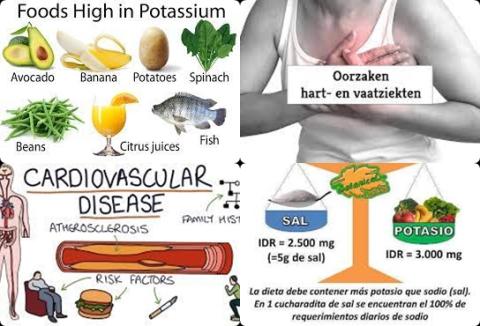
Objectives:
The relation between sodium intake and cardiovascular disease remains controversial, owing in part to inaccurate assessment of sodium intake. Assessing 24-hour urinary excretion over a period of multiple days is considered to be an accurate method. Therefore, this review article has been conducted.
Do higher sodium and lower potassium dietary intakes, as measured in multiple 24-hour urine samples, reduce in a dose-response manner cardiovascular risk?
Study design:
This review article included 6 prospective cohort studies with a total of 10,709 healthy adults (54.2% women), of whom, 571 cardiovascular events were ascertained during a median study follow-up of 8.8 years (incidence rate: 5.9 per 1000 person-years).
The mean (±SD) age was 51.5±12.6 years.
Results and conclusions:
The investigators found that the median 24-hour urinary sodium excretion was 3,270 mg (10th to 90th percentile, 2099 to 4899).
The investigators found higher sodium excretion, lower potassium excretion and a higher sodium-to-potassium ratio were all significantly associated with a higher cardiovascular risk in analyses that were controlled for confounding factors [p ≤ 0.005 for all comparisons].
The investigators found in analyses that compared quartile 4 of the urinary biomarker (highest) with quartile 1 (lowest), the hazard ratios were 1.60 [95% CI = 1.19 to 2.14] for sodium excretion, 0.69 [95% CI = 0.51 to 0.91] for potassium excretion and 1.62 [95% CI = 1.25 to 2.10] for the sodium-to-potassium ratio.
The investigators found each daily increment of 1,000 mg in 24-hour urinary sodium excretion was significantly associated with an 18% increase in cardiovascular risk [hazard ratio = 1.18, 95% CI = 1.08 to 1.29].
The investigators found each daily increment of 1,000 mg in 24-hour urinary potassium excretion was significantly associated with an 18% decrease in cardiovascular risk [hazard ratio = 0.82, 95% CI = 0.72 to 0.94].
The investigators concluded higher sodium and lower potassium dietary intakes, as measured in multiple 24-hour urine samples, reduce in a dose-response manner cardiovascular risk. These findings may support reducing sodium intake and increasing potassium intake from current levels.
Original title:
24-Hour Urinary Sodium and Potassium Excretion and Cardiovascular Risk by Ma Y, He FJ, […], Hu FB.
Link:
https://pubmed.ncbi.nlm.nih.gov/34767706/
Additional information of El Mondo:
Find more information/studies on sodium and potassium consumption and cardiovascular disease right here.
A 24-hour urine sample is simply a collection of all urine passed over a 24-hour period of time. The test is used to check kidney function.
The normal range for 24-hour urine volume is 800 to 2,000 milliliters per day (with a normal fluid intake of about 2 liters per day).